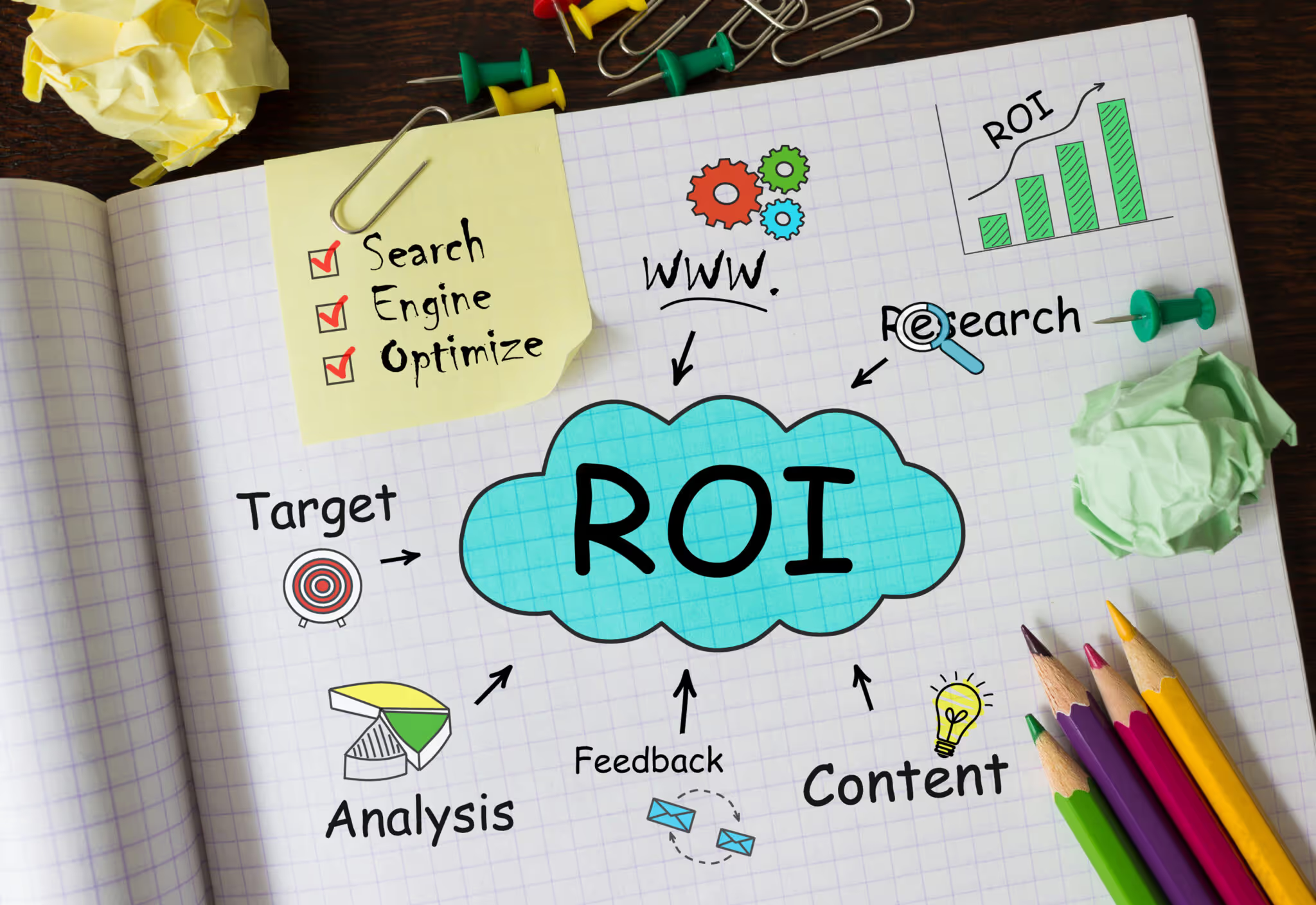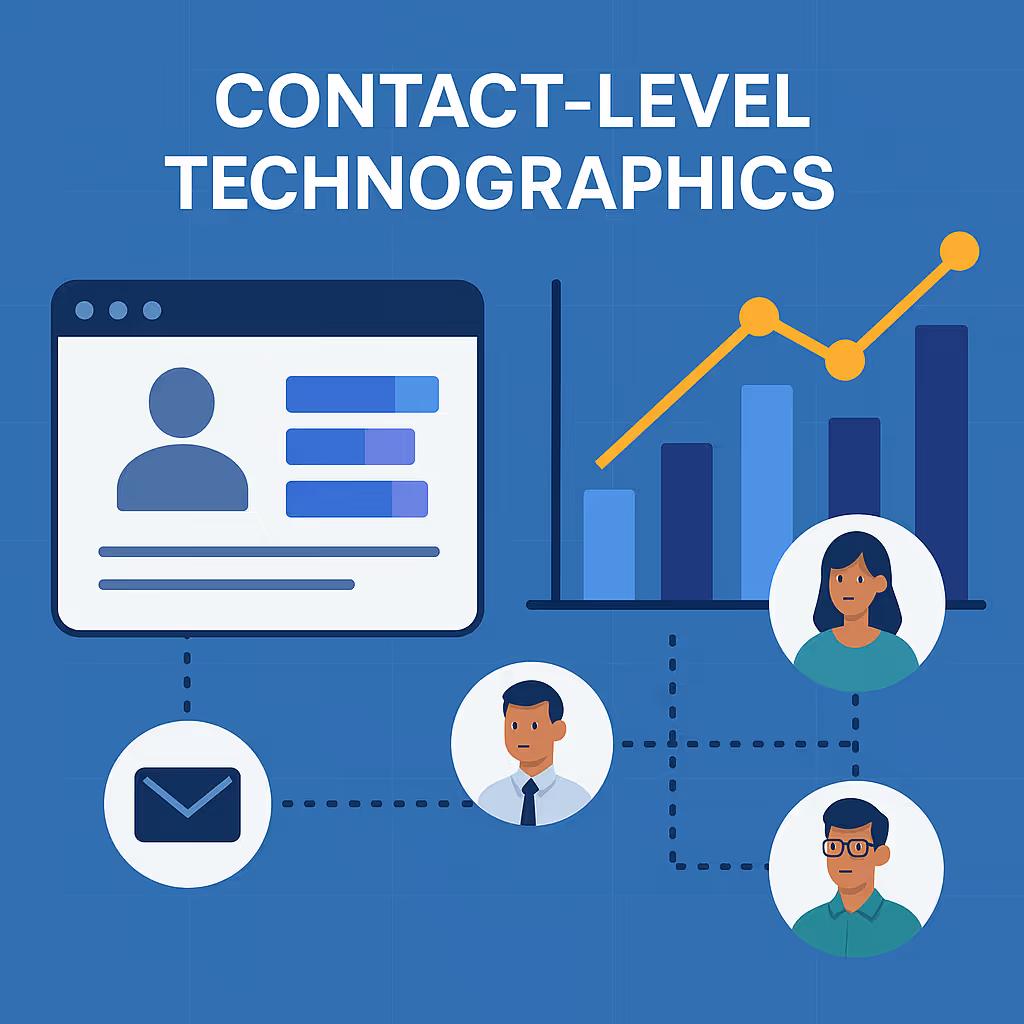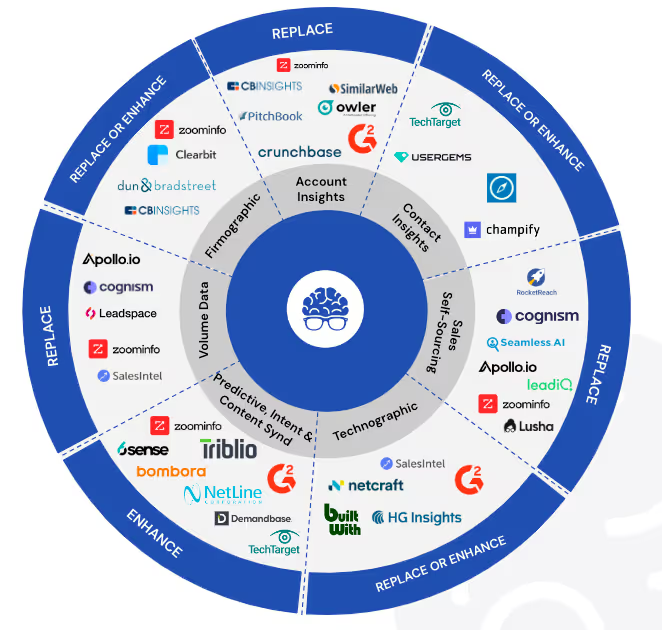In the Business-to-Business (B2B) ecosystem, a tech stack refers to the combination of various software applications and digital tools that organizations utilize to streamline their operations. This arsenal can include anything from marketing automation tools, sales engagement tools, customer relationship management (CRM) systems, to a myriad of other technologies aimed at improving operational efficiency. However, the exponential growth of tech stacks over the past decade—9x, according to Salesforce 1—has brought to light an interesting paradox: sometimes, less can be more. As this realization permeates the B2B landscape, businesses are increasingly recognizing the manifold benefits of streamlining their tech stacks, particularly when it comes to B2B data providers, intent signals, and Ideal Customer Profile (ICP) expansion. This article will explore in depth how consolidating your tech stack can supercharge your Return on Investment (ROI) and enhance your operational efficiency.
The Power of Consolidation: Unpacking the Concept of Tech Stack Consolidation
The term 'consolidation' in the context of a tech stack signifies the process of integrating and centralizing your digital technology tools. This strategy primarily aims to enhance efficiency, simplify user interfaces, and harmonize data across different platforms. For instance, a business might be utilizing separate marketing automation tools for email marketing, social media marketing, and content marketing, alongside distinct sales engagement tools for pipeline management, proposal creation, and contract management. Consolidating these disparate tools into a comprehensive, integrated solution not only simplifies workflows but also fosters better lead nurturing and significantly bolsters ROI 2.Real-life examples, backed by research, testify to the dramatic increase in ROI brought about by tech stack consolidation. A Hubspot study indicated that businesses experienced an average ROI increase of 35% post consolidation 2. A significant part of this boost was credited to the adoption of more effective B2B data providers, thus enabling enhanced lead generation and streamlined inbound marketing strategies.
Harnessing the Potential of B2B Data Providers
The rise of intent signal data providers such as LeadGenius represents a watershed moment in the realm of B2B lead generation. Providing real-time automated profiling, data validation, and enrichment services, these providers enable businesses to engage in personalization at scale 4. This, in turn, empowers businesses to accurately pinpoint their ICP and expand their Total Addressable Market (TAM) with data uniquely designed for their Go-To-Market (GTM) playbook and customer journey.However, the crux lies in effectively leveraging these resources. As per a Gartner report, 61% of organizations feel they lack the necessary in-house capabilities to deliver on their strategy 5. With the right implementation strategy and adequate training, businesses can tap into the full potential of these cutting-edge sales intelligence tools, thereby securing the best ROI from a B2B data enrichment tool and insights provider.
The Magic of B2B Audience Segmentation
B2B audience segmentation represents one of the most transformative strategies to extract maximum ROI from your tech stack consolidation. This technique involves categorizing your audience into distinct segments based on shared attributes, behaviors, or needs. Such segmentation allows for more personalized and targeted marketing and sales initiatives, invariably leading to higher response and conversion rates.LeadGenius, with its automated profiling feature, assists businesses in refining their ICP identification, thereby enabling them to conduct more precise and targeted outreach 6. This not only increases the probability of deal closures but also shortens sales cycles. Such a strategic approach equips businesses for a sustainable and profitable future in an increasingly competitive B2B environment.
Trimming the Fat: The Imperative of Vendor Consolidation
At a time when 87% of organizations are maintaining or even elevating their 2023 revenue targets despite budget slashes 7, the pressure to accomplish more with less is immense. Consolidating vendors, particularly within the tech stack, can offer tangible financial benefits and better lead nurturing.Vendors that follow a one-size-fits-all approach are rapidly becoming obsolete. Replacing these with a unique data strategy is essential in today's fiercely competitive B2B landscape 8. Vendor consolidation not only trims the fat, eliminating redundant tools and services, but also significantly improves the bottom line.
Seizing the Reins of Your Data Strategy
Taking control of your data strategy begins with a comprehensive understanding of the technologies and vendors that comprise your tech stack. Consolidating your tech stack with more efficient and effective technologies like LeadGenius can supercharge your ROI, streamline your operations, and set your business up for sustainable success.Remember, a well-structured tech stack not only enhances internal efficiencies but also elevates the customer experience. Streamline your tech stack, refine your B2B operations, and unlock a higher ROI today!
Footnotes
- Salesforce Research, "Tech Stacks Growth in the Last Decade", 2023 ↩
- Hubspot, "The ROI of Streamlining Your Tech Stack", 2023 ↩
- Ibid ↩
- LeadGenius, "Automated Profiling, Data Validation & Enrichment", 2023 ↩
- Gartner, "Organizational Strategy and Capabilities", 2023 ↩
- LeadGenius, "Benefits of ICP Identification", 2023 ↩
- Harvard Business Review, "Increasing Revenue Targets While Slashing Budgets", 2023 ↩
- TechTarget, "The Need for a Unique Data Strategy in B2B Ecosystems", 2023 ↩




